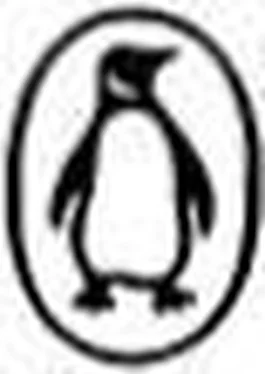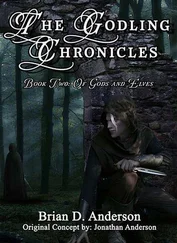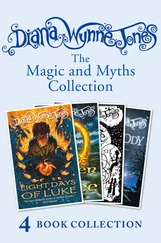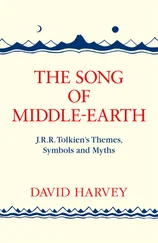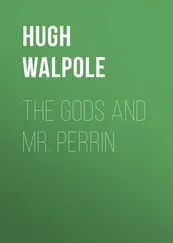Davidson, H. - Gods and Myths of Northern Europe
Здесь есть возможность читать онлайн «Davidson, H. - Gods and Myths of Northern Europe» весь текст электронной книги совершенно бесплатно (целиком полную версию без сокращений). В некоторых случаях можно слушать аудио, скачать через торрент в формате fb2 и присутствует краткое содержание. Жанр: Старинная литература, на английском языке. Описание произведения, (предисловие) а так же отзывы посетителей доступны на портале библиотеки ЛибКат.
- Название:Gods and Myths of Northern Europe
- Автор:
- Жанр:
- Год:неизвестен
- ISBN:нет данных
- Рейтинг книги:5 / 5. Голосов: 1
-
Избранное:Добавить в избранное
- Отзывы:
-
Ваша оценка:
- 100
- 1
- 2
- 3
- 4
- 5
Gods and Myths of Northern Europe: краткое содержание, описание и аннотация
Предлагаем к чтению аннотацию, описание, краткое содержание или предисловие (зависит от того, что написал сам автор книги «Gods and Myths of Northern Europe»). Если вы не нашли необходимую информацию о книге — напишите в комментариях, мы постараемся отыскать её.
Gods and Myths of Northern Europe — читать онлайн бесплатно полную книгу (весь текст) целиком
Ниже представлен текст книги, разбитый по страницам. Система сохранения места последней прочитанной страницы, позволяет с удобством читать онлайн бесплатно книгу «Gods and Myths of Northern Europe», без необходимости каждый раз заново искать на чём Вы остановились. Поставьте закладку, и сможете в любой момент перейти на страницу, на которой закончили чтение.
Интервал:
Закладка:
Woden, 56, 161, 180
Wolf: associated with Odin, 48, 65, 147, 149; at Ragnarok, 59, 205, 218; devouring Sun and Moon, 28; Fenrir, 31, 37, 38, 216–17, 178
Woods, sacred, 59, 79, 86, 87, 169
Word-lists, 62
World Serpent: adversary of Thor, 34, 35, 89, 90, 138, 207; at Ragnarok, 37, 38, 46–7, 202; at root of the Tree, 27; in the sea, 32; Loki’s child, 29, 178, 188
World Tree, 26–7, 28, 190–6, 200, 212, 213; creation and, 201; Heimdall and, 172, 174; Mimir and, 166, 168; Odin on, 143–5; Ragnarok and, 37, 202; spring by, 38, 166
Wulfstan, Bishop, 61, 62
Wyrd, 217
Yakuts, 145, 174
Yggdrasill, 26–7, 28, 143, 145, 191, 193, 194, 196, 220. See also World Tree
Ymir, 27, 198–9, 201
Ynglinga Saga , 45, 136n.; Freyr in, 92, 100; Haki in, 136n.; Odin in, 51, 63, 145, 152, 201; Ynglings, 104, 152
Ynglingatal , 97, 156
Yngvi, 104
Zealand (Sjaelland), 45, 113
Zeus, 20, 48, 57, 86, 169
1. M. Eliade, Patterns in Comparative Religion , London, 1958, p. 6.
1. In Folklore Fellows’ Communications , Helsingki, 94 (1931) and 110 (1933).
1. Saxo Grammaticus, Gesta Danorum (translated Elton, 1894), 11, 65, p. 78.
2. ibid, VII, 248, p. 298.
3. ibid, VII, 247, p. 296.
1. Gesta Hammaburgensis ecclesiae Pontificum (iv, 27).
2. ‘Birds’ is doubtful, as it is the result of an emendation, but there is no doubt about the threat to hang the prisoners.
1. An English translation is given by J. Brøndsted in The Vikings (Penguin Books, 1964), pp. 301 ff. A more authoritative version, with notes, is in German, by A. Zeki Validi Togan, Ibn Fadlan’s Reisebericht , Leipzig, 1939.
1. Gothic War , VI, 14.
2. History of the Goths , translated by C. C. Mierow, Princeton University Press, 1915, vol. IV, p. 61.
3. Strabo, Geography , VII, 2, 3.
1. H. Andersen, ‘Der femte store Mosefund’, Kuml , 1951, pp. 9 ff.
1. Sigrdrífumál , 5.
2. F. Mossé, ‘L’Origine de l’écriture runique’, Conférences de l’Institut de linguistique de l’Université de Paris , x, 1950–1, p. 55.
3. Archaeologia Cantiana , LXX, 1956, pp. 97 ff.
1. Germania , 7.
2. See H. R. Ellis Davidson, The Sword in Anglo-Saxon England , Oxford, 1962, pp. 193 ff.
1. Germania , 39.
2. The stabbing of Helgi in Fjǫturlundr (Fetter Grove) in a prose insertion in Helgakuiða Hundingsbana , 11, has led some to argue that the Deus Regnator was Wodan. The gap in time however is too great for this to be taken as proof. For the idea of ritual binding connected with the gods, Eliade has a most valuable section in Images and Symbols (London, 1961), pp. 92–124.
1. MS. Cod. pal., 577, Vatican Library.
2. Les Dieux des Germains , Paris, 1959, pp. 71ff.
1. R. C. Bosanquet, ‘On an altar dedicated to the Alaisiagae’, Arch. Aeliana (3rd series), 19, 1922, pp. 185 ff.
1. N. Kershaw, Anglo-Saxon and Norse Poems , Cambridge, 1922, p. 117.
2. C. Donahue, ‘The Valkyries and the Irish War-Goddesses’, Publications of the Modern Language Association (Baltimore), 56, 1941, pp. 1 ff.
1. G. Dumézil, Mythes et dieux des Germains , Paris, 1939, pp. 80 ff.
1. C. Marstrander, ‘Thor en Irlande’, Revue Celtique , 36, 1915–16, pp. 241 ff.
1. F. P. Magoun, ‘On the old-Germanic Altar or Oath Ring’, Acta Philologica Scandinavica , 1949, XX, pp. 277 ff.
1. Acta Lapponia (English translation, 1674), p. 40.
1. Mythes et dieux des Germains , Paris, 1939, pp. 98 ff.
1. At Hvitlycke, Tanum, Bohuslän, Sweden, shown in O. Almgren, Nordische Felszeichnungen als religiose Urkunden , 1934, p. 118.
1. Heimskringla, Hákonar Saga Góða , 17.
2. H. R. Ellis Davidson, ‘Thor’s Hammer’, Folklore , 74, 1963. For the wide use of the hammer amulet in Scandinavia, see P. Paulsen, Axt und Kreuz in Nord- und Osteuropa , Bonn, 1956, pp. 205–21.
1. Germania , 3.
2. Presumably the same as Hoder ( Hǫðr ) in Snorri.
1. H. R. Ellis Davidson, The Sword in Anglo-Saxon England , Oxford, 1962, pp. 67 and 92–3.
1. J. Grimm, Teutonic Mythology , (translated Stallybras, 1888), IV, P. 1737.
1. C. Marstrander, ‘Thor en Irlande’, Revue Celtique , 36, 1915–16, p. 247.
1. Examples are given in Folklore , 71, 1960, p. 5.
1. The scene is also shown on a stone from Altuna, Uppland, Sweden. Here the serpent has taken the bait, but the giant is not shown.
1. ‘Fra gammelnorsk Myte og Kultus’, Maal og Minne , 1909, pp. 17 ff. A different emphasis is given by J. Sahlgren, Eddica et scaldica , 1927–8, pp. 225 ff.
1. Saxo Grammaticus, Gesta Danorum (translated Elton, 1894), VI, 185, p. 228.
1. Flateyjarbók , 1, 322.
1. See G. Gjessing, ‘Hesten i forhistorisk kunst og kultus’, Viking , 7, 1945, pp. 29 ff.
1. H. R. Ellis Davidson, The Sword in Anglo-Saxon England , Oxford, 1962, pp. 49–50. For boar-helmets, see R. Cramp, ‘ Beowulf and Archaeology’, Medieval Archaeology , 1, 1957, pp. 60 ff.
2. op. cit., pp. 59–60.
1. H. Henningsen, Kirkeskibe og Kirkeskibsfesten , 1950.
1. A. Holtsmark, ‘Vitazgjafi’, Maal og Minne , 1933, pp. 111 ff.
1. VI, 172, p. 212 (Elton’s translation).
1. H. M. Chadwick, The Origin of the English Nation , Cambridge, 1924, pp. 260 ff.
1. J. Bing, ‘Ull’, Maal og Minne , 1916, pp. 107 ff.
1. ‘Deux petits dieux scandinaves’, La Nouvelle Clio , 4, 1952, pp. 1 ff.
1. Germania , 40.
1. Corrector, 153 ( Bussbücher und das kanonische Bussverfahren , ed. H. J. Schmitz, Düsseldorf, 1898), p. 443.
1. Students of Freud will recognize the significance of a necklace for a fertility goddess (cf. the ring in Rabelais). It illustrates the familiar tendency to represent the sexual parts of the body by others higher up, and by ornaments worn on these.
1. The fullest recent study of shamanism is Mircea Eliade, Le Chamanisme et les techniques archaīques de l’extase , Paris, 1951.
1. See for instance Dag Strömbäck, Sejd , Lund, 1935.
1. Historia Eliensis , 11, 56. See C. E. Wright, The Cultivation of Saga in Anglo-Saxon England , 1936, pp. 158–9.
2. The story of Vǫlsi in Flateyjarbók (11, 331) where a housewife’s ‘god’ is the generative organ of a horse, fits in with this general picture. See F. Ström, Diser, Nornor, Valkyrjor , 1954, pp. 22 ff.
1. N. K. Chadwick, ‘þorgerðr Hǫlgabrúðr and the Trolla þing’, in Early Cultures of North-Western Europe (H. M. Chadwick Memorial Studies), 1950, pp. 397 ff.
1. Patterns in Comparative Religion , London, 1958, p. 359.
1. Arkiv für Nordisk Filologi , 49, 1933, pp. 97 ff.
1. H. Schneider, Germanische Heldensage , Berlin, 1928, vol. 1, p. 369.
2. R. W. Chambers, Widsith , Cambridge, 1912, p. 95.
3. For this giant family, see ‘Weland the Smith’, Folklore , 69, 1958, pp. 145 ff.
1. Another interpretation is ‘law-district of Njord’. See J. de Vries, Altgermanische Religionsgeschichte , 11, p. 470, for discussion of this.
1. H. R. Ellis, The Road to Hel , Cambridge, 1943, pp. 16 ff. See also C. Green, Sutton Hoo , London, 1963, p. 99.
2. R. L. S. Bruce-Mitford, ‘The Sutton Hoo Ship-Burial’, Proc. Suffolk Inst. of Archaeology (Ipswich), 25, 1949, PP. 1 ff.; also Green, op. cit.
Читать дальшеИнтервал:
Закладка:
Похожие книги на «Gods and Myths of Northern Europe»
Представляем Вашему вниманию похожие книги на «Gods and Myths of Northern Europe» списком для выбора. Мы отобрали схожую по названию и смыслу литературу в надежде предоставить читателям больше вариантов отыскать новые, интересные, ещё непрочитанные произведения.
Обсуждение, отзывы о книге «Gods and Myths of Northern Europe» и просто собственные мнения читателей. Оставьте ваши комментарии, напишите, что Вы думаете о произведении, его смысле или главных героях. Укажите что конкретно понравилось, а что нет, и почему Вы так считаете.
